
What is a grinding machine? What are the types?
Are you trying to shape hard materials with precision? Using the wrong tool can lead to inaccurate parts and wasted effort. Grinding machines are the solution you need.
A grinding machine is a power tool that uses a rotating abrasive wheel to wear away material. It is essential for high-precision finishing, shaping extremely hard metals, and achieving very smooth surfaces that other cutting tools simply cannot produce.

When you need to make something perfect, you turn to grinding. These machines are the final step in a lot of manufacturing processes1. I know this because for nearly 30 years, our factory has been making the grinding wheels these machines use. We have seen firsthand that every product requires a unique grinding solution. A tiny bearing needs a different process than a large engine block. This is why so many different types of grinding machines2 exist. Understanding the main types is the first step to choosing the right process for your job.
What is a grinding machine used for?
Do you think grinding is just for sharpening knives? That is only a small part of the story, and this view misses its most important roles in modern industry.
A grinding machine is primarily used for finish machining. Its main purpose is to remove small amounts of material to achieve a highly precise dimension, create an extremely smooth surface finish, or shape very hard materials that other tools cannot cut effectively.

In our world of abrasives, grinding is all about precision and perfection. You do not use a grinder to cut a piece of steel in half quickly. You use it to take that piece of steel and make it perfectly flat and exactly 10.000 millimeters thick. Let’s look at its main jobs.
1. Achieving High-Precision Dimensions
When a part needs to fit another part with extreme accuracy, down to a few microns, grinding is the only way. For things like fuel injectors, bearings, and hydraulic pistons, this level of precision is not a luxury; it is a necessity for the component to function correctly.
2. Creating a Fine Surface Finish
Grinding can produce surfaces that are incredibly smooth, sometimes even mirror-like. This is critical for parts that move against each other. A smooth surface reduces friction, heat, and wear, which makes the final product last longer.
3. Machining Hard Materials
What do you do when you need to shape hardened steel, tough superalloys, or ceramics? A standard milling cutter or drill bit will barely scratch them. Grinding is the answer. As a factory that produces superhard abrasives like diamond and CBN (Cubic Boron Nitride) wheels, this is our specialty. These wheels are designed specifically to grind the toughest materials on earth.
What are the four types of grinding machines?
The term "grinding machine" is very broad. It is easy to get confused about which machine does what. Let’s simplify it by looking at the four most common families of grinders.
The four main types of grinding machines are surface grinders, cylindrical grinders, centerless grinders, and tool and cutter grinders. Each is built to create a specific geometry, from perfectly flat planes to complex, multi-faceted cutting tools.

Just as we make different wheels for different jobs, engineers have designed different machines to hold those wheels and grind different shapes. Understanding these four basic types will cover most of what you see in a machine shop.
- Surface Grinders: These machines are used to produce flat surfaces. Imagine a very precise, powerful sander for metal. The workpiece is held on a magnetic chuck and moved back and forth under the rotating grinding wheel.
- Cylindrical Grinders: These are used to grind the outside diameters of cylindrical parts, like shafts, pins, and rollers. The workpiece is rotated as the grinding wheel grinds it, creating a perfectly round part.
- Centerless Grinders: This is a specialized type of cylindrical grinder for high-volume production. Instead of holding the workpiece between centers, it rests on a blade between two wheels. It is much faster to load and unload parts.
- Tool & Cutter Grinders: These are highly versatile machines used to produce or sharpen complex cutting tools like drill bits, end mills, and reamers. They have multiple axes of movement to create complex angles and shapes.
| Grinder Type | Main Purpose | Common Workpiece |
|---|---|---|
| Surface Grinder | Create flat surfaces | Mold bases, blocks, plates |
| Cylindrical Grinder | Grind external diameters | Shafts, pistons, bearings |
| Centerless Grinder | High-volume external grinding | Pins, rollers, tubes |
| Tool & Cutter Grinder | Sharpen or create tools | Drills, end mills, reamers |
What is the most widely used grinding machine?
With so many specialized machines, you might wonder which one is the most essential. If a machine shop could only have one grinder, which would it be? There is a clear answer.
The surface grinder is the most widely used and fundamental grinding machine. Its ability to create precise flat, square, and parallel surfaces makes it an indispensable tool in nearly every tool room, repair shop, and manufacturing facility around the world.

Why is the surface grinder so common? Because almost everything in the mechanical world starts with a flat and square block. Before you can drill holes or mill slots accurately, you need a reliable flat reference surface. The surface grinder provides that foundation. Its versatility is unmatched. It can be used for high-volume production, one-off custom parts, and repair work. A good operator can do amazing things with a simple manual surface grinder. This machine is the workhorse of the grinding world. For our factory, this means we produce a huge number of Type 1 straight wheels, as they are the standard wheel for the most common type of surface grinder, the horizontal-spindle machine. Its popularity makes it a cornerstone of our conventional abrasives product line.
What is a type 7 grinding wheel?
You have the right machine, but without the right wheel, you are going nowhere. The numbering system for wheel shapes can be confusing. Let’s look at one specific example to understand why it matters.
A Type 7 grinding wheel is a straight wheel that is "recessed on one side." This means it has a hollowed-out section on one face. This recess is designed to provide clearance for the machine’s mounting flanges, which hold the wheel.

This brings us back to our core insight: you must match the tool to the job perfectly. The shape of a grinding wheel is just as important as the abrasive material it’s made from. A Type 1 wheel is a simple, plain disc. A Type 7 wheel is a modified version of that. Why does it have a recess? The recess allows the wheel to be mounted on a grinder where the flange and spindle nut are large. Without the recess, the flange might hit the workpiece, especially when grinding a shoulder or a corner. A Type 5 wheel is similar, but it has a recess on both sides. We produce these standard shapes and many others. More importantly, we also make custom wheel shapes for specific customer applications. Sometimes a standard wheel just will not fit into a tight space or provide the right angle of attack. That is when our customers rely on our nearly 30 years of experience to design and produce a custom wheel shape that solves their unique grinding challenge.
Conclusion
Grinding machines and wheels come in countless shapes and sizes. Success depends on matching the right machine and the right wheel to your specific material and the final finish you need.
Written by
leeon
You may also be interested in:
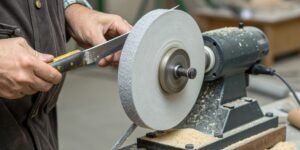
How to use a hard felt bench grinding wheel on knives?
Getting a razor-sharp, polished edge on a knife can be frustrating and slow. A dull knife is dangerous, and using the wrong tool can easily
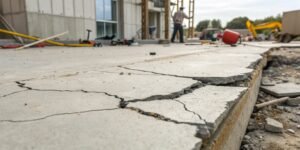
What are grinding cracks and how do you stop them?
Are tiny cracks appearing on your ground surfaces? This problem leads to part failure, wasting time and money. You can solve it by understanding the
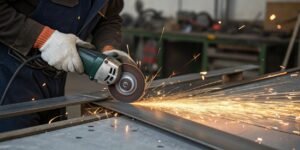
What does an angle grinder do that other tools can't?
Struggling with tools for multiple tasks? Carrying a heavy toolbox is inefficient. An angle grinder replaces many tools, saving you time and effort on the
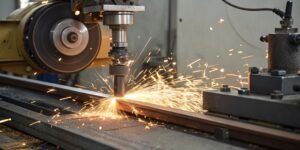
How to reduce the cycle time in a grinding machine?
Is your grinding process a major bottleneck? Slow cycle times hurt your bottom line and delay deliveries. You can speed up production by optimizing key

Do you regularly sharpen your chisels? If so, how?
A dull chisel ruins wood and causes frustration. This wastes time and expensive materials. Learning to sharpen correctly is the simple, game-changing solution you need
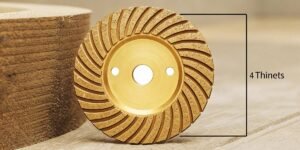
How is a grinding wheel specified?
Confused by the codes on a grinding wheel? Making the wrong choice costs money and ruins parts. Let me show you how to read them
